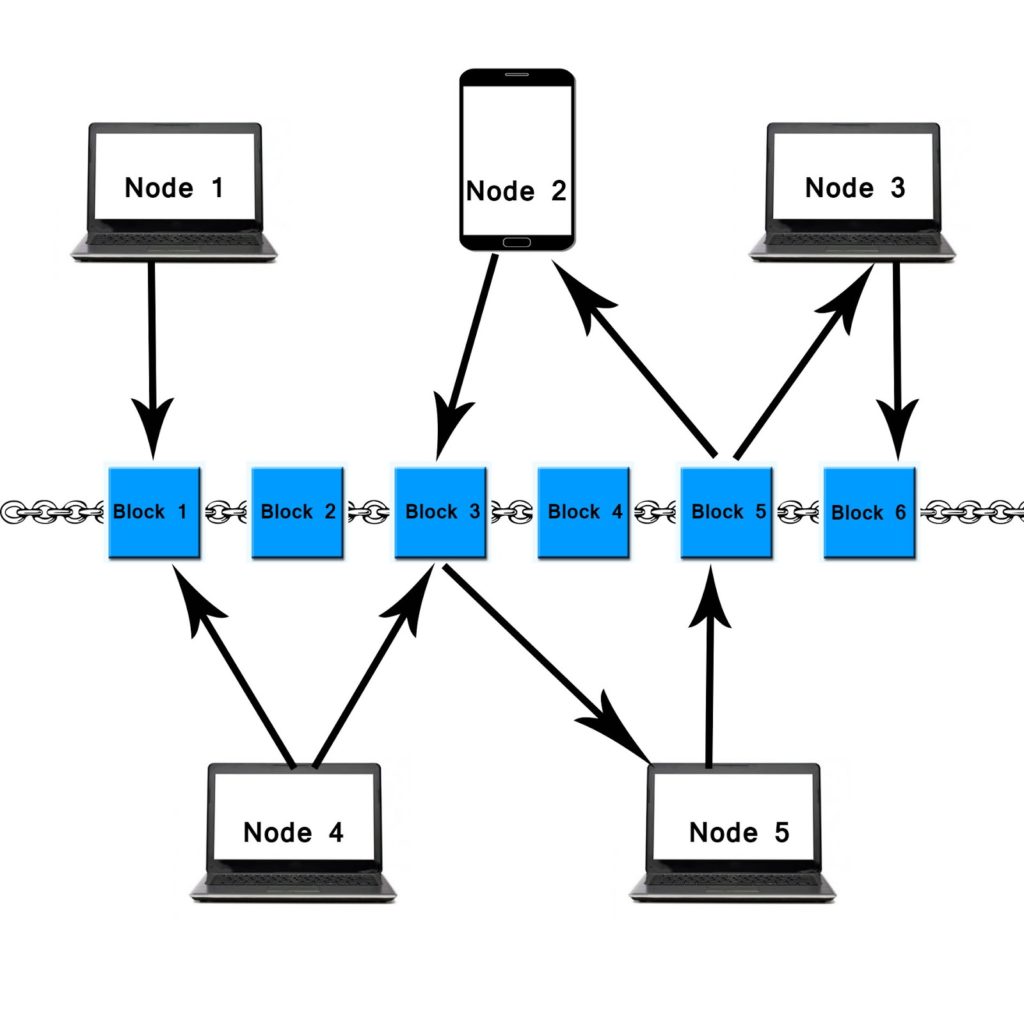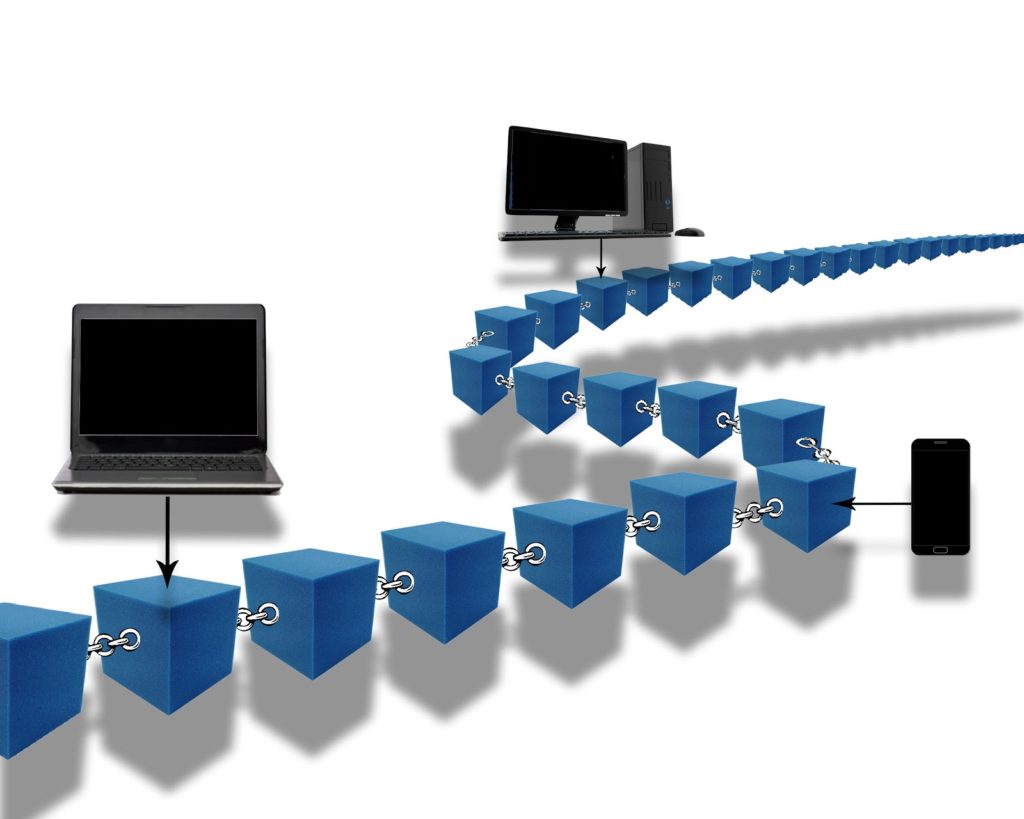
We have all heard of the blockchain or distributed ledger technology (DLT), but have you ever wondered how does it work?
Blocks as Storage of Data
The name blockchain itself reveals that the core of the system are blocks upon which the data is stored and distributed. Blocks can vary in size dependable on which blockchain system we are talking about.
For example, we already talked about the fundamental differences between Bitcoin (BTC), whose blocks are 1MB large, and its hard forks, which can have much more space, like Bitcoin Cash (BCH) and its 8MB blocks.
The System is a Network
Blockchain, as a peer-to-peer ecosystem, forms a network of nodes. Every node, provided that it has the right private keys, can access data on the network.

Peer-to-peer means that there is no central storage space for data, on the contrary, all the information is shared by the network participants.
All nodes on the blockchain can interact with one another, thus making transactions of cryptocurrencies, tokens or records between users possible, and cryptography ensures the integrity and security of the information.
Transactions Have to be Verified
All transactions on the blockchain have to be verified by the consensus algorithms.
There are different consensus mechanisms integrated into various blockchain networks.
Proof-of-Work (PoW)
The most known is Proof-of-Work (PoW) algorithm, which is used by some of the most prominent blockchain systems like Bitcoin and Ethereum (ETH).
In PoW, miners, who are using powerful processors, verify transactions, for which they are rewarded with that blockchain’s native cryptocurrency.
However, the mining mania, which reached its climax during the second half of 2017, showed us that PoW may not be an optimal consensus reaching mechanism due to the high power consumption, so even Ethereum, which became famous partially for high mining rewards, began considering migrating to PoS.
Proof-of-Stake (PoS)
In PoS, transactions are verified by nodes put on staking option, which contain a certain amount of the network’s respective cryptocurrency. Staking nodes receive a reward for their contribution to the network.
Lately, developers are looking to improve on that system, so they have come up with…
Delegated-Proof-of-Stake (DPoS)
Although similar to PoS, the Delegated-Proof-of-Stake has some notable differences.
On DPoS networks, token holders vote for groups who will be system’s representatives and transaction authenticators.
The most known example of DPoS is EOS network, where EOS token holders voted for 21 block producers who are managing and securing the network, and in turn, also receive very high rewards in EOS cryptocurrency.
Proof-of-Authority (PoA)
Proof-of-Authority is a consensus reaching system where a certain authority serves as a pivotal point of the network.
For example, if a shipping company utilizes a private blockchain along with a supplier, and retailer, proof of authority would likely be their consensus algorithm of choice like it is in the VeChain blockchain ecosystem.
Commonly, the company that created the private blockchain application has the authority.
There is also a Directed Acyclic Graph (DAG) method, which isn’t implemented into the blockchain and, therefore, is a topic for another discussion.
Now That We Know the Basics…
When we have explained the various parts of the blockchain in the simplest of ways, we can try to describe the transaction process.
For example, Luka wants to send Laisa 1 token, so he makes the request to the peer-to-peer network system where it will be verified.
Luka pays the transaction fee (which varies depending on the blockchain used), and upon the verification, the transaction data is put into the block with other verified transaction and sent across the chain.
Laisa receives a token into her wallet and has the exclusive right to use it as she wishes.

What is it Useful For?
By being encrypted, decentralized, and tamperproof, the blockchain technology can be put to work of a wide variety of tasks.
Asset traceability, finance, payments, licensing, identity management, and records and contract management are only a few use cases.
Day after day, many more are arising from the fingers of hard-working developers and coders, who are, by integrating blockchain into different industries, making the world run more efficiently.




Your blog is a great resource for anyone looking to learn more about this topic.
Once I originally commented I clicked the -Notify me when new comments are added- checkbox and now every time a comment is added I get four emails with the identical comment. Is there any method you can take away me from that service? Thanks!
Enjoyed every bit of your blog article.Thanks Again. Great.
Definitely believe that which you stated. Your favourite reason appeared to be on the net the simplest thing to take into account of. I say to you, I certainly get irked even as folks think about worries that they plainly do not recognise about. You controlled to hit the nail upon the highest and also defined out the whole thing with no need side effect , other people can take a signal. Will likely be again to get more. Thank you
Wonderful post but I was wanting to know if you could write a litte more on this subject? I’d be very thankful if you could elaborate a little bit further. Bless you!
Thanks for posting this. Looking for these resources 😀
I have taken note that of all types of insurance, health insurance is the most marked by controversy because of the conflict between the insurance cover company’s necessity to remain adrift and the client’s need to have insurance policies. Insurance companies’ income on health plans are incredibly low, so some organizations struggle to make money. Thanks for the ideas you reveal through this web site.
Thank you for your blog.Really thank you! Great.
Hello, I think your blog might be having browser compatibility issues. When I look at your website in Chrome, it looks fine but when opening in Internet Explorer, it has some overlapping. I just wanted to give you a quick heads up! Other than that, awesome blog!
This actually answered my drawback, thanks!